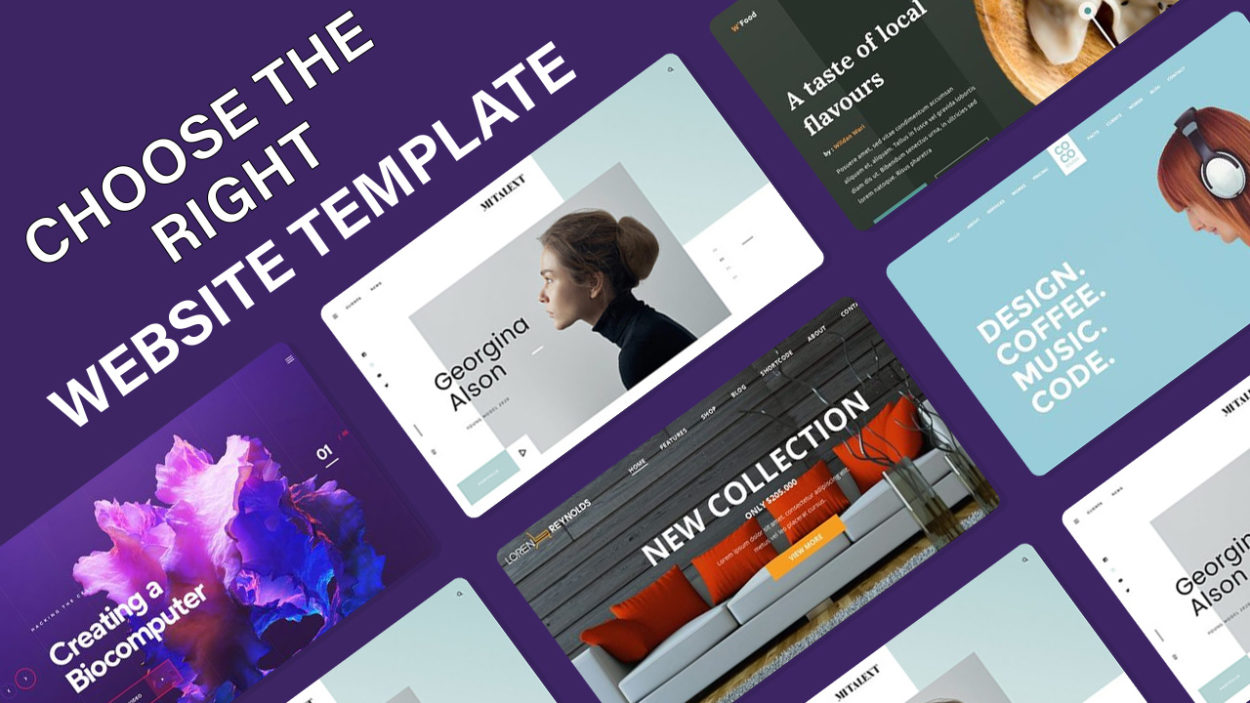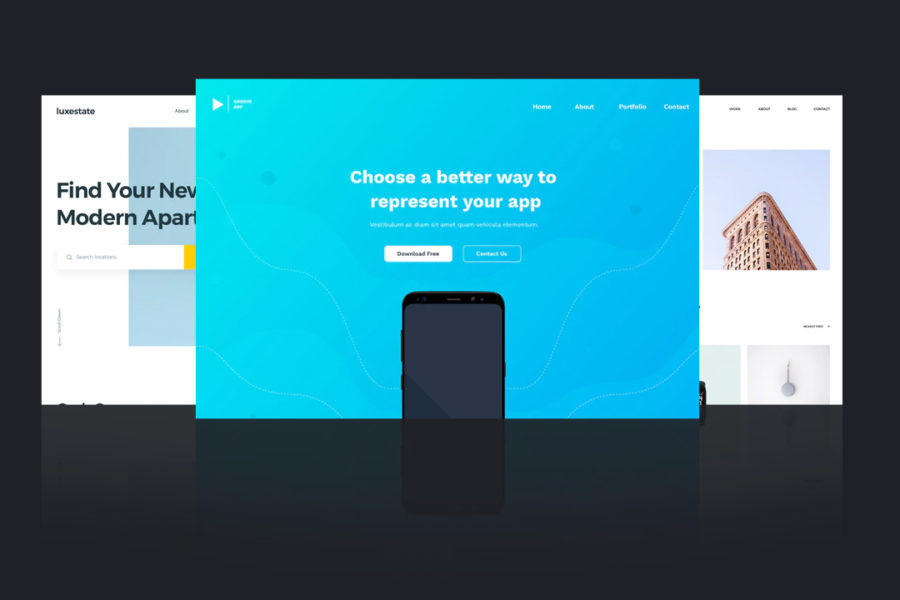You don’t have to be an experienced designer or programmer to build a professional website, owing to fully prepared website designs, you can now make effective websites with hardly any previous experience in web design. As you proceed on your adventure of creating an outstanding template website, your first obstacle is: which template should I go for?
There are so many choices that the challenge of choosing the right prototype can be daunting, particularly if you’re a beginner. Here are a few suggestions that can help you pick the right match for you.
UNDERSTAND WHAT TYPE OF WEBSITE ARE YOU DESIGNING:
The first and most apparent factor when choosing your first design is that you need to be very specific about the kind of website you intend to create. You might be shocked that this tip made a list, but it’s a priority: no one constructs a platform without understanding what they and their visitors want. Even so, there are several fantastic, stand-out models around nowadays that if you are a beginner designing a website for your service, it may be difficult not to be compelled to pick a glamorous template for its beautifully pleasing appearance instead of a style that is suitable for your platform.
Each site has its characteristics, its uniqueness. No matter how pleasurable and straightforward a personal blog may appear, an e-commerce platform cannot be designed in the shape of a personal website. Recognizing the functionality of your website is also the first and most critical, although sometimes overlooked, aspect of choosing the right design.
BE MINDFUL WHEN COMPROMISING COST OVER QUALITY:
There is no lack of templates on the market: free vs. charged, personalized vs. premium, and much more. There is a range of items to remember, and the price is undoubtedly a huge issue for many. Realize that you’re not only spending your capital, you’re also sacrificing your time and energy. Ask yourself this: would I invest my time and resources customizing my website, or would my energy be best invested focusing on my good or service? In the latter instance, you can opt for off-the-shelf designs, which might be more costly, but would drastically minimize the duration of hours you need to spend designing your sites.
Although it is enticing to opt for free designs to save expenses, this could be counter-productive. Free designs also have a multitude of challenges in the context of low functionality and can lack tech assistance among other issues. Paid models normally offer excellent services and are usually encoded by experienced professionals. These models will also enable you to spend less time designing your site, energy you can spend working on your company.
DON’T RUSH THINGS:
You might be delighted to announce your website; you could just get a layout and build your site right away. Although this strategy will help you release your web, note that ensuring it is a success is a separate thing. Choosing a bad prototype and “adding items slowly” is tougher than you might expect. As your website gathers momentum and you need to react instantly, the simple layout you originally choose cannot appear to be perfect or even successful, and in some situations, you may even have to restart instead. So, don’t hurry things with the expectation of completing things fast, give it your best shot, be careful, and do a study on which template is better suited to you now and which will fulfill your function in the coming years.
HUNT FOR FLEXIBLE AND PERSONALIZED OPTIONS:
You will need to change the design in some way to make your website look personalized. Based on the models, without any of your original content, the website would never stand out from thousands of site rivals using the same design. With this in view, template software offers modification features. Some provide clients with multiple modification options, while others do not encourage you to alter several of the basic features on your site.
If you’re not a designer at all, you may find that more flexibility causes creating websites more difficult and may prefer to choose minimal customization choices instead. Yet you have to keep an end goal in mind. In the near future, you will need to attach non-default functionality to the site, and only customizable design tools can make that possible.
MAKE SURE YOU TRUST YOUR TEMPLATE PROVIDER:
Numerous developers are indeed selling their templates online. Not every template is beautifully written or works comprehensively. A badly written design can only cause more difficulties and will not help you develop the web. So, whether you spend on a prototype or get it for free, make sure you get the template from a credible, reliable supplier.
Investigate how well regarded the supplier is and read the reviews from past purchasers to assist you in making your selection. Customer service is another essential factor when choosing a retailer design. Also, the best-written models can have bugs, and if you do come across one, the provider must make an effort to correct the problem.
SEARCH FOR SEO COMPATIBLE TEMPLATES:
You certainly want your site to reach out to more users, and you can’t do that without powerful Search Engine Optimization (SEO). While you might be able to create a visually beautiful website with quality content, you will have to use SEO strategies to help rate your page in search results. Using prototypes that are not only spectacular but have a strong hierarchy and simple navigation will work amazingly. Besides, stop modifying the design for each group. The more models you use on your web, the more challenging it is for people to access your website.
CONCLUSION:
Selecting a suitable template could hit someone’s nerves. It should satisfy all project specifications as well as the needs of the customer. The template should be of good quality and emerge from a reputable provider with a competent and mobile interface in addition to expanded features. Make sure to keep the above-mentioned tips in your mind when selecting a template for your website to have excellent outcomes and a professional-looking website.







Leave a Comment